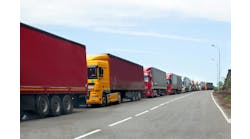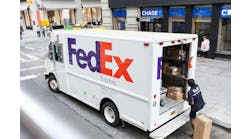Last mile delivery has emerged as a critical element of the customer experience with the continued evolution of the retail market. Of course, the largest factor, called the “Amazon Effect” has heightened consumer expectations for fast, efficient delivery.
While 41% of the survey respondents mentioned they define the last mile value chain from order placement to delivery, 33% stated it was between dispatch and delivery, and a further 22% said they consider the last mile to be strictly between pickup and delivery.
A new report, “Navigating The Last Mile – Capacity Planning in Today’s Supply Chains”, released by FRAYT on May 30, surveyed 95 supply chain professionals and found that 79% of respondents consider last mile proficiency as very or extremely important in providing a competitive edge. And they are willing to invest in this area as 37% of surveyed respondents dedicated over 50% of their overall logistics operations to last mile delivery services.
A large part of the investment is in technology which allows more visibility into operations, helping companies streamline operations better. in fact, 47% of the respondents agreed that technology had improved their delivery accuracy, with a further 38% stating it also reduced their delivery time. Adopting freight technology solutions like real-time tracking and route optimization improves last mile operations, with 63% of the survey respondents mentioning it increased customer satisfaction.
The survey revealed that 65% of businesses believe communication with customers during delivery is essential. By providing real-time updates to customers, companies can keep them informed about the delivery status, estimated time of arrival, and any delays or issues that may arise. This not only enhances customer satisfaction but also builds trust and loyalty.
The survey also underscores the importance of innovation and customization in last mile delivery. Businesses are offering personalized delivery options such as specific delivery windows or locations.
Freight Capacity
A common denominator to 42% of the respondents was their intention to increase technology integration moving into the future, helping them gain more visibility into assets and manage their networks better.
For instance, integrating with shipping tech can help companies track their deliveries in real-time, optimize routes, and get alerts for any issues that may arise. This can dramatically improve scheduling and help companies make more informed decisions — as seen with nearly half the respondents, who mentioned that improved delivery scheduling helped optimize their delivery networks.
Companies are also more receptive to collaborating with other delivery companies to consolidate shipments. 24% of the respondents pointed out that collaborating helps reduce their empty miles while improving their network density due to association. This ultimately translates to cost savings, lesser congestion by removing redundant delivery runs, and lower emissions.



